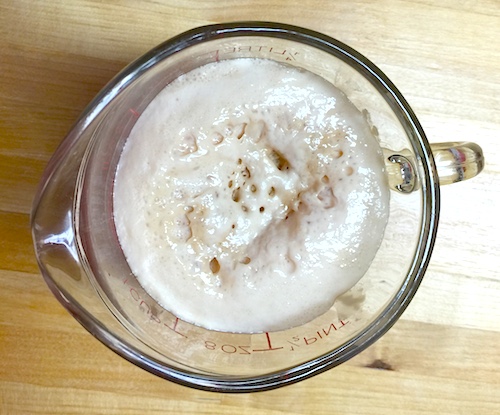
I often get asked about the necessity of proofing yeast, how should the yeast look, how long should it take, what if the yeast doesn’t get foamy, etc, etc… I would like to answer some of those questions here. My most watched video on YouTube is How to Make Pizza Dough, and in that video I show how to proof active dry yeast. I’d like to go over some of the many concerns and questions involving this step.
First, let me talk about the yeast. I would prefer to use beautiful, natural fresh (cake) yeast for baking breads and pizzas, but that is quite impractical for home baker as it doesn’t stay fresh long, comes in 1 lb. blocks and is not usually found in grocery stores. The cake yeast that was available for the home baker and sold in grocery stores (I don’t know if it still is) is not the same as commercial cake (fresh) yeast. The commercial yeast has no starch or sugar in it, whereas the home version did. The advantage of using fresh yeast is that it can usually be incorporated directly into the dough ingredients without softening or dissolving first and has no additives.
This leads me to the next subject about additives. I prefer to use yeast that has nothing else added to it. You can see in the picture below that the yeast used for this demo is from Aldi and the only ingredient is yeast.
Natural active dry yeast usually needs to be softened in liquid before use. Many of the instant and/or quick rising yeasts do not need to be pre-softened and can be added directly to the rest of the ingredients. Many bakers and many websites swear by these instant yeasts. I am not one of them. They usually contain Sorbitan monostearate and sometimes, ascorbic acid. An explanation of why Sorbitan monostearate is used is found on this Red Star yeast FAQs page. Let me just say that I find the quality of the dough and texture of the crumb better when made with regular active dry yeast.
So why proof the yeast? You don’t have to, but it will show you that the yeast is alive and well and also gives it a nice kick start before being added to the dough. If you don’t add sugar (and sometimes I don’t-depending on the recipe), it won’t foam, but the softening is important to help the yeast to develop and grow once it gets some food, such as found in flour.
Here is a picture of 1 packet (~2 teaspoons) of Aldi regular active dry yeast (above) gently stirred into 1/2 cup warm spring water with 1 teaspoon of sugar and allowed to rest 10-15 minutes. Yours may not look like this for several reasons. Here are a few:
1) Your yeast may not be fresh enough, even though the “use by” date may be valid.
2) The water may be too cool or too hot. Temperature should be between 90-110F.
3) Your water may have things like chlorine or excessive hardness, etc, that can affect yeast growth.
4) A different brand yeast may soften and/or grow at a different rate than the yeast above.
In closing, even if your yeast seems sluggish, it may still work perfectly fine. It has happened to me many times. However, I have had to throw out yeast, especially bulk active dry yeast, that just seemed to lose its strength. When yeast gets old, it not only becomes sluggish, it can affect the quality of the dough.
Hope that answers some questions. Happy Baking!




